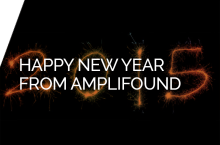A burly man in an orange jumpsuit, complete with facial tattoos and a toothless grin, turns to his new cellmate who was just booked earlier that day and asks, “What are you in for?”
The slender, slightly terrified newbie regards his prison-issued shoes, scratches his scruffy beard nervously and replies, “I stole copyrighted images from the Internet to use on my personal blog about artisanal cupcakes.”
If the situation above seems unbelievable, that’s because I exaggerated it for shock value. But the truth isn’t that far off: people really can get in big trouble for using other peoples’ copyrighted images without permission. Lawyers get involved, angry letters are sent, and large sums of money are exchanged. It’s serious stuff!
Don’t Take Our Word for It…
Just ask Kari DePhillips, co-owner of The Content Factory, who had to cough up $3,000 when one of her employees accidentally lifted an image of Omaha, Nebraska’s skyline to use in a blog post. OMAHA, come on!
“We were blindsided by the situation,” explains Kari. “On top of the expense of the settlement itself, there was also the cost of attorney fees and the cost of paying people to review and replace every image on every blog post we’d ever written as a company. But we had to do it, because if you use copyrighted images without securing the proper rights to do so, it’s not a matter of if you’ll get sued. It’s a matter of when.”
Old Habits Die Easily
And this is all too common in digital publishing. One reason for increased copyright infringement is the ease of finding images online. Simply visit Google’s image search, type in a query, and you’ve got thousands of pictures before your eyes. Chances are, however, these are the property of the person who created them, and you will have to pay a licensing fee or royalties to feature them in your blog post.
Luckily, there are many places online to find free (and legal!) images for your blogs. Below are some of our favorites that we, in fact, use on a daily basis when publishing content on Amplifound.
Getty Images
Getty is one of the bigger names in free image licensing. According to Wikipedia, they have over 8 million still photos for use. And selecting one free of charge is fairly simple, so long as you don’t plan on using it for commercial use (i.e. putting it on a T-shirt and selling it). First, find whatever type of photo you’re looking for by entering a query into the search box at the top of Getty’s homepage. Next, select an image from the search results page that fits your blog post perfectly. Then, select the embed button (</>) beneath the photo and copy the code that appears in the pop-up window. The last step is pasting it into your blog post and voila: you’ve got a high quality stock photo to use.
Wiki Commons
Wikimedia Commons is a large collection of 23 million user-submitted media files that are allowed to be used freely across the net. Just be sure to read the usage policy, as attribution is required for some images. Read more about downloading and utilizing Wiki Commons media files on your blog, here.
OpenClipArt Gallery
If your image needs revolve around more clip-art style items, then OpenClipArt is one of the best sources available. Everything from people and animals, to diagrams that outline complex ideas (like how circuits work, for example) can be found in this site’s giant index of over 50,000 searchable graphics. The best part is, all images are in the public domain, meaning they’re 100% free to use.
PicMonkey
Sometimes, the image you’re looking for is so unique or off-the-wall, that the above sites won’t have what you’re looking for. Or, you just want to get creative with your images. If that’s the case, then PicMonkey might be more your speed. Here, you can create or modify your own images with various tools, special effects, stamps, text and more within PicMonkey’s photo editor. It helps if you have experience with other photo editors like Photoshop (or at least MS Paint!). The free version of this tool has plenty of capabilities and features, but if you need to step up your photo editing game, you can spring for PicMonkey Royale.
What Are Your Favorite Free Image Resources?
Now, when it comes time to publish a new post, you’ll know where to turn for free blog images. Whether you need high quality photos, clip art, or an image only you could create, you can consider the four sites above to find the finishing touch for your blog post. There are plenty of other resources for free images — which are your favorites? Let us know in the comments section below. And who knows, your input may help a fellow blogger avoid a huge lawyer fee, or worse: having to make small talk in the lunch line at the state penitentiary!









